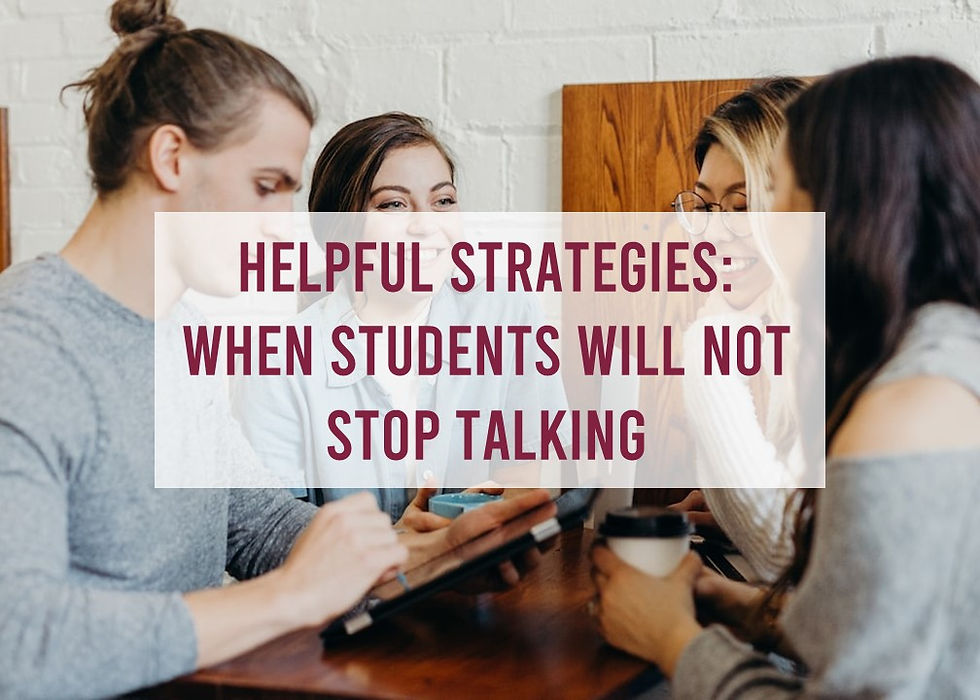Helpful Strategies: When Students Will Not Stop Talking
- Michelle McDonald

- Sep 10, 2019
- 2 min read
Updated: Aug 31, 2022

Do you have a class that will not.stop.talking? You've probably tried the "I'm just waiting" trick and literally waited, and waited, and waited for more than 10 minutes with little success. Waiting can work, but sometimes students see it more as an opportunity to continue to talk and show disrespect. In this case, taking control of the class may mean trying some different strategies. You can grab all of the charts in this blog post for free at the end of this post.

Teacher vs. Student:
This strategy is super easy to implement and works well in all grade levels. Create a T-chart on the whiteboard, or a place that is visible for students. The goal is for students to beat the teacher. Any time a student talks out or is off task, the teacher earns a point. Any time the students are quiet and on task, they earn a point. At the end of the day, if they beat the teacher, they earn a reward. This could mean 5 minutes of electronics time at the end of the week, with that amount building each time they beat the teacher. Or could be a pencil, eraser, candy, sticker, or whatever you choose. Students love a competition, so this one I've found works really well.

No Blurting Teams:
This works well if your students sit in table groups or pods. The goal is to be the team with zero (or the least amount of) talking out or interruptions. At the end of the day, the team that wins, earns a coupon, candy, or other prize. I also have teams try to set a new PR (personal record). Sometimes a table group will really struggle to not talk, and feel like they are so behind there's no chance they'll win, so why try. By setting a PR goal, this gives those table groups an incentive to try to break their own record.

Self-Monitoring Blurt Chart:
Most likely there are students in your class who ARE quiet, on task, remember to raise their hand, and are pretty respectful. But these students can get overshadowed by those that continually blurt out. If I have a couple students that continually blurt out, I use a blurt chart that allows those students to self-monitor their talking and interrupting. On the chart, the student keeps track of the times that they remember to raise their hand, wait their turn (not interrupting), and also the number of times they blurt out in class. At the end of the day they make a self-evaluation. If they successfully remembered to raise their hand and wait their turn more frequently than blurting out, they earn a smiley face (or sticker). At the end of the week, the student can look at the progress he or she made. This can also be sent home with parents for a signature. A student can earn a coupon or trip to the treasure chest.
I've also found that using a blurt chart with visuals can be a great reminder for students. I laminate or add these to a sheet protector to use again and again.

Download the Blurt Charts shared here for FREE. Click the link below to download the PDF.
What other tips would you share with readers? Comment below.






Comments